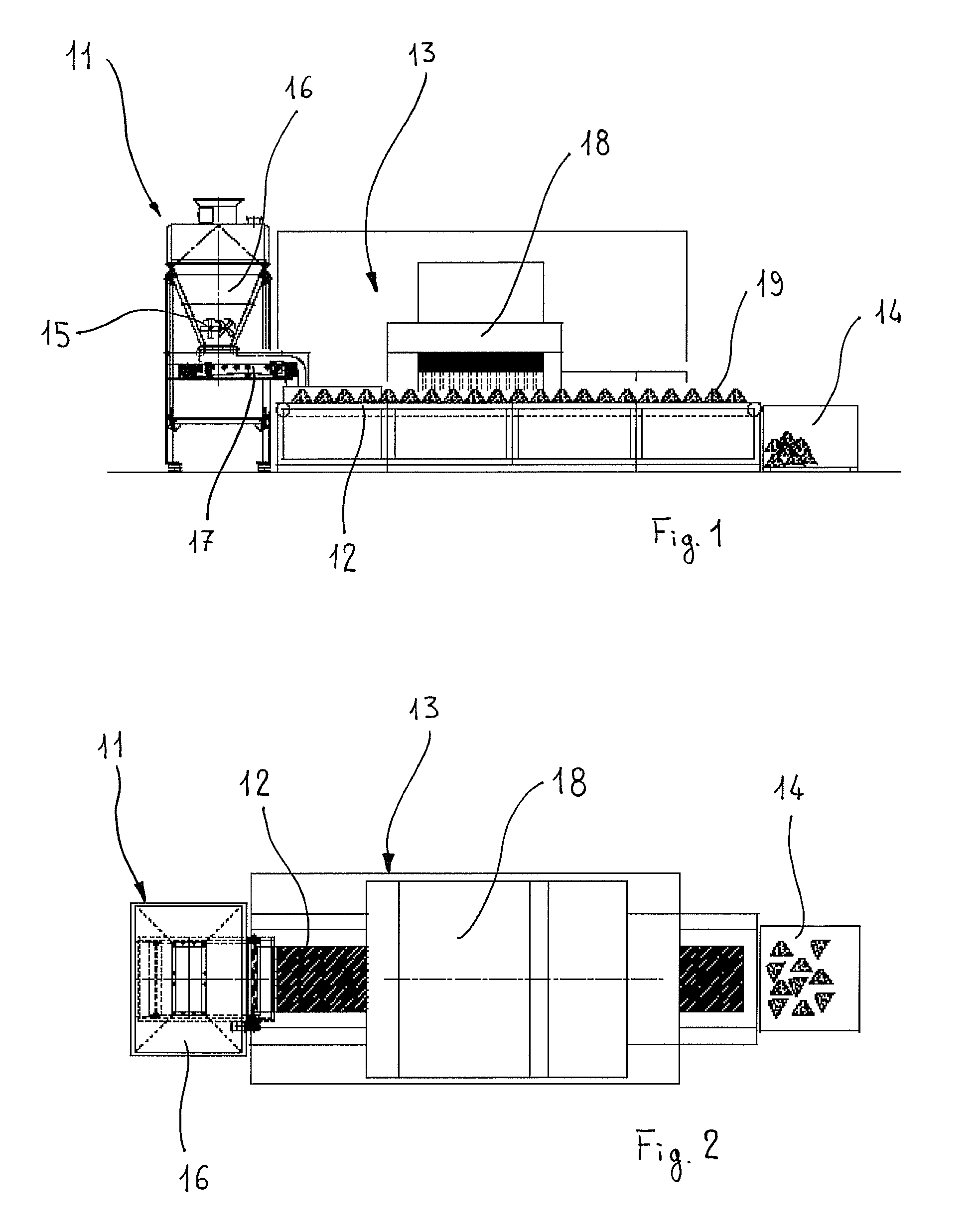Method and plant for rendering inert toxic substances in uncompacted residual material containing hardenable resin and aggregrates
a technology of toxic substances and uncompacted residual materials, applied in the direction of dielectric heating circuits, manufacturing tools, electric/magnetic/electromagnetic heating, etc., can solve the problems of affecting the quality of raw materials, the management of initial mixes, and the inability to meet the requirements of production, so as to eliminate the risk of pollution
- Summary
- Abstract
- Description
- Claims
- Application Information
AI Technical Summary
Benefits of technology
Problems solved by technology
Method used
Image
Examples
Embodiment Construction
[0023]In the case of resins used to obtain composite sheets or blocks of conglomerate material using Bretonstone technology, the method according to the present invention is advantageously applied to the residual mix and to the cleaning waste following a relatively prolonged stoppage of the production plant.
[0024]According to the invention, the uncompacted waste is thus introduced inside an oven which uses as a heat source a generator of radiofrequency waves, i.e. at a frequency of less than 300 MHz, and is heated to temperatures of 100-120° C. and kept at this temperature for a period of 15-20 minutes.
[0025]Owing to the action of the catalyst and the additives present in the initial mix, the polyester resin contained in the mix is thus catalysed, bonding all the styrene contained inside it.
[0026]The radiofrequency waves allow rapid heating internally of the soft mass of uncompacted mix, causing catalysis of the resin and combination of the monomer contained inside it. The same resu...
PUM
| Property | Measurement | Unit |
|---|---|---|
| frequency | aaaaa | aaaaa |
| temperature | aaaaa | aaaaa |
| frequency | aaaaa | aaaaa |
Abstract
Description
Claims
Application Information
 Login to View More
Login to View More - R&D
- Intellectual Property
- Life Sciences
- Materials
- Tech Scout
- Unparalleled Data Quality
- Higher Quality Content
- 60% Fewer Hallucinations
Browse by: Latest US Patents, China's latest patents, Technical Efficacy Thesaurus, Application Domain, Technology Topic, Popular Technical Reports.
© 2025 PatSnap. All rights reserved.Legal|Privacy policy|Modern Slavery Act Transparency Statement|Sitemap|About US| Contact US: help@patsnap.com

